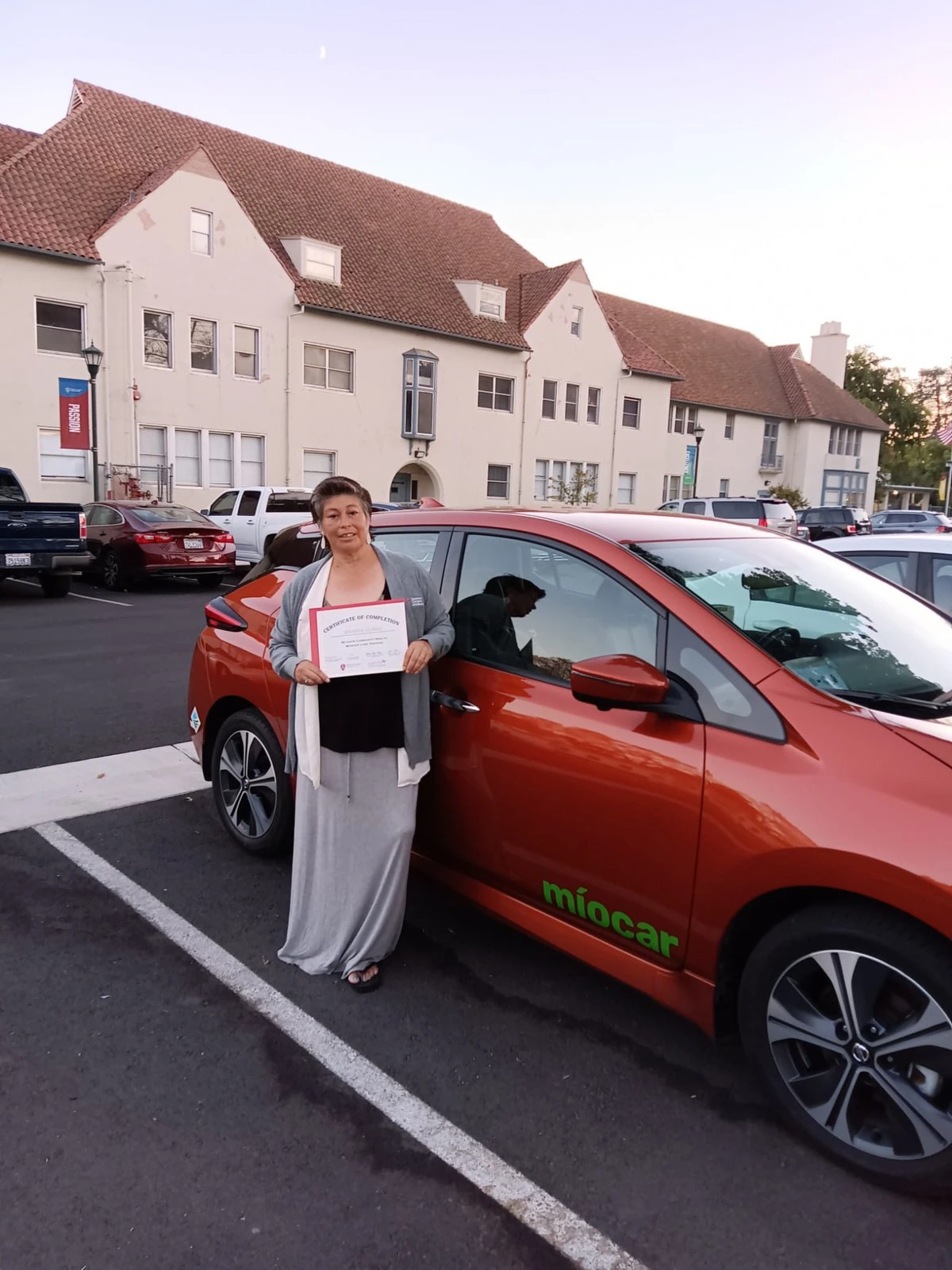This story was originally published by Reasons to be Cheerful
Edwin Lindo used to see new electric vehicle chargers as a sign he was about to be priced out of his neighborhood. “Communities who have been historically gentrified, historically marginalized,” he says, “we don’t typically get opportunities to access beneficial technologies.”
Two EV chargers are now in front of Estelita’s Library, the Seattle community library and bookstore Lindo cofounded. One can be used by anyone, the other is reserved for a rentable wheelchair-accessible EV owned by the electric car-share cooperative ZEV that costs $8 per hour to use.
The ZEV EV is used by locals for church, hospital visits and field trips. Sometimes, Lindo drives the car around and gives a ride to someone carrying too many groceries.
ZEV (which stands for “zero emissions vehicle”) operates 11 vehicles around Washington State. It’s part of a growing movement of community-first EV car shares. The EPA reports that transportation is the third-largest source of CO2 emissions in the country. Passenger cars and light-duty trucks contribute 57 percent of these emissions. EVs could be a key driver of electrification — and car shares can help make EVs more accessible and reduce car ownership.
Tax credits and low maintenance costs make EVs cheaper than gas cars long-term, but upfront cost is still a barrier, says Lindo: “It’s hard to see long-term savings when you are constantly thinking, ‘How do I survive?’”
From 1998 to 2009, nonprofits like San Francisco’s City CarShare and PhillyCarshare gained traction in the US. But in the 2010s, corporations acquired many of these nonprofits.
Since 2016, the federal government has funded community-first EV car shares for low-income and underserved communities. In 2021, the Infrastructure Investment and Jobs Act included $13.2 billion for car-sharing and the Build Back Better Act granted $1 billion for electric vehicle infrastructure in underserved communities. At the state level, California has invested the most, with $70 million through the California Air Resources Board from 2015 to 2021.
Across the US, community-first EV car shares range in scale from two to 300 vehicles. Examples include Míocar and BlueLA in California and Evie in Minnesota, among others, charging between $4 and $16 an hour.
Launched in 2021, ZEV is the only publicly funded car-sharing co-op. A co-op can be more flexible when seeking revenue, founder Greg Dronkert says.
On an individual level, users can be subscribers or members. Subscribers pay a $15 registration fee, a $20 monthly access fee and $16 per hour each time. Members pay a $500 equity investment and only $8 an hour to use a car. One membership equals one vote and the opportunity to run for the board. For now, most enjoy $5 per hour or $8 per hour introductory rates, depending on the car. A $5 low-income rate is also available. All locations have a grant-funded dedicated charger, exclusive to the car share.





